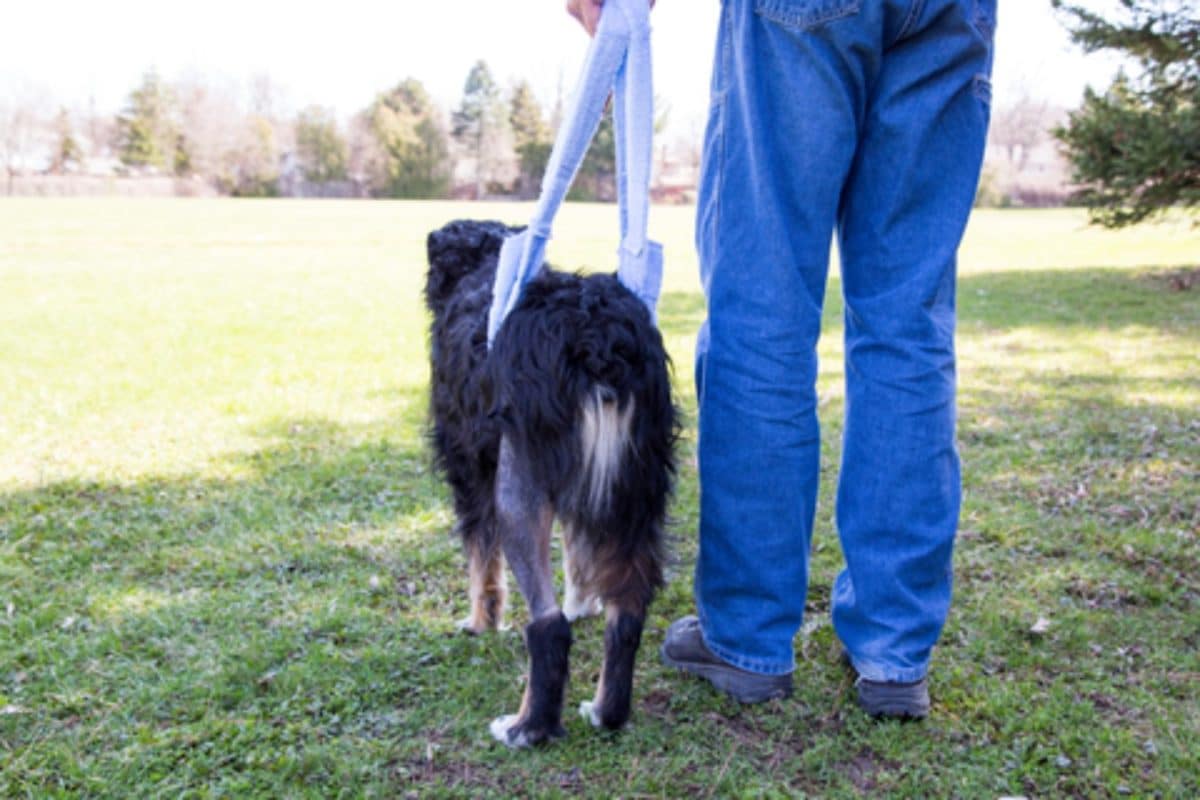Everything, Dogs, Health care
Hip Dysplasia in Dogs: Prevention and Treatment
Fido has been having difficulty standing up after lying down, and he hesitates to climb stairs. He limps or walks with a swaying motion, and he has developed an awkward, hopping gait when running. After your veterinarian examines your dog and does X-rays, you get the diagnosis: canine hip dysplasia.
What is hip dysplasia?
Hip dysplasia is a degenerative condition affecting the hip joints. While cats and humans can also develop it, the condition is more common in dogs. Large dog breeds in particular are susceptible to hip dysplasia. Normally, the femur (thighbone) head fits snugly into the hip socket. When hip dysplasia occurs, the femur fits loosely because of loose ligaments, poor muscle condition, or a malformed ball or socket. More than one factor may contribute to the condition, which can range from minor looseness to hip dislocation. One or both hips may be affected during the dog’s development. The abnormal joint erosion causes pain and arthritis in the affected hip(s). While dogs as young as four months may begin to have symptoms, the condition might not manifest itself until middle age or later.Why do some dogs get hip dysplasia?
Genetics are a major factor, and more than one gene is involved. If either parent has the genetic susceptibility toward hip dysplasia, the offspring will have this predisposition too. If both parents have it, the offspring are more likely to develop the condition. Environmental factors appear to play a role in influencing which dogs develop hip dysplasia and when:- Growth rate (particularly with large dog breeds)
- Amount of exercise
- Nutrition levels
- Obesity
Preventing hip dysplasia in dogs
While we can’t predict which dogs that are carriers of the disease will develop it, we can greatly lessen the chances of their getting it by taking these precautions: Restrict the amount of protein in the dog’s diet. Dogs that are fed unrestricted amounts of high-protein food have a higher tendency toward hip dysplasia. Study results don’t suggest that dogs be fed low-protein diets, but that the total amount of protein shouldn’t exceed recommended daily levels. Don’t let your dog become overweight. Excess weight adds more stress to the bones. Restrict the amount and types of exercise for puppies. Moderate exercise and the development of muscle mass is essential for good health. But for dogs with a tendency toward hip dysplasia, exercise that puts extra stress on the joints, such as jumping, may contribute to these dogs developing the condition.Treating hip dysplasia in dogs
If your dog has developed hip dysplasia, a number of treatments can help slow or stop the progression of the disease and relieve your dog’s pain. Keep your dog warm. Give your dog a place to sleep that’s warm and draft-free. When the weather is cold, a dog sweater can help. Provide a comfortable bed for your dog. A well-padded bed helps reduce pressure on a dog’s joints and protects the dog from cold coming from the floor. Give your dog medication and supplements.- Adequan Canine is an anti-inflammatory, injectable prescription drug for dogs with arthritis. It reduces joint friction and helps rebuild cartilage in damaged joints, making it more than just a painkiller.
- Your veterinarian may recommend an over-the-counter anti-inflammatory such as Aspirin.
- Omega-3 fatty acid supplements also help reduce inflammation.
- Glucosamine aids in reducing pain and rebuilding damaged cartilage.
- In the early stages of hip dysplasia, a triple pelvic osteotomy can stabilize the femur in the hip socket by cutting the pelvis in three pieces and repositioning the pieces. This procedure is done more with younger animals.
- Dogs that are under 30 pounds, fully grown, and in good health may be able to get a total hip replacement — the femur head and the hip socket are replaced with an artificial joint.
- If the condition has progressed and the joint has degenerated considerably, the head and neck of the femur can be removed surgically. This procedure is called a femoral head and neck osteotomy. Animals that have had this surgery can’t run as well as dogs that have never had hip dysplasia, but the hind leg muscles compensate in a way that allow dogs to walk without this joint.

